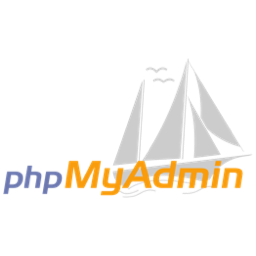phpMyAdmin is an open-source web-based tool for managing and administering MySQL and MariaDB databases. It provides a graphical user interface (GUI) that allows users to interact with MySQL or MariaDB databases without having to use the command line. phpMyAdmin is written in PHP and is widely used for tasks related to database management, such as creating, modifying, and deleting databases, tables, and data records.
phpMyAdmin is a valuable tool for database administrators, developers, and website owners who need to manage MySQL or MariaDB databases in a user-friendly manner. It is often used for tasks such as database creation, schema modification, data import and export, and running ad-hoc queries. Its web-based interface makes it accessible from anywhere with an internet connection, and its popularity and extensive user community contribute to its ongoing development and support.

Price Calculator
Data Centers Around the Globe

Frequently Asked Questions
The system requirements for deploying phpMyAdmin are relatively modest, making it accessible for a wide range of hosting environments. Here’s a breakdown of the key aspects:
Web Server:
Any web server that supports PHP will do: Apache, Nginx, IIS, etc. Ensure your chosen server offers the correct PHP version as well.
PHP:
Minimum Version: PHP 4.1.0 with session support for basic functionality.
Recommended Version: PHP 7.2.5 or later for improved performance and security.
Database:
MySQL or MariaDB: Either of these popular databases are compatible with phpMyAdmin. Version 5.5 or later is recommended.
For more detailed information, refer to the phpMyAdmin documentation.
Here are some common use cases for phpMyAdmin:
Database administration, table operations, data entry and modification, query execution, database import and export, user and privilege management, server and configuration management, database relationships, database maintenance, monitoring and statistics, localization and accessibility, and web hosting control panels.
Here are some popular alternatives:
GUI Tools:
DbVisualizer, Adminer, Navicat Premium, and HeidiSQL.
Command-Line Tools:
MySQL Command Line Interface (CLI), pgAdmin, and DBeaver.
Cloud-Based Solutions:
MySQL Workbench, Amazon RDS Management Console, and Google Cloud SQL.
Here’s why Kamatera stands out as the most compelling option:
Cutting-edge hardware: Kamatera leverages Intel Xeon Platinum processors and NVMe SSD storage, guaranteeing exceptional performance for your database queries and data manipulations.
Global network reach: With data centers strategically located across four continents, Kamatera provides low-latency access to your database, regardless of your users’ geographical locations. This minimizes lag and ensures consistent performance for geographically distributed teams.
Elastic infrastructure: Kamatera’s infrastructure seamlessly scales to accommodate your growing database size and increasing query complexity. You can easily add or remove resources on-demand, without downtime or performance bottlenecks.
Industry-leading security measures: Kamatera prioritizes security by implementing data encryption, access control mechanisms, vulnerability scanning, and compliance with industry standards like PCI DSS and SOC 2.
24/7 Support: Kamatera’s dedicated support team is available 24/7 to assist you with any questions or issues you may encounter with your phpMyAdmin hosting.














